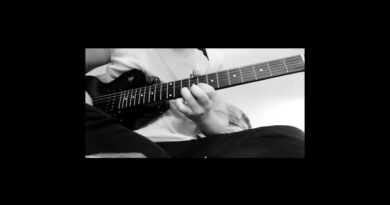Demystifying Guitar Modes: Simplicity Behind the Complexity – TrueFire Blog
For many guitarists, the term “modes” can seem like a complex musical enigma, often associated with advanced playing and intricate theory. However, the truth is far more encouraging: modes are not only approachable but are incredibly practical tools that can add immense depth, color, and texture to your solos and improvisations. In this post, we’ll break down what modes are, why they’re simpler than you might think, and how you can start using them today to enhance your guitar playing.
RELATED: Get Eric Haugen’s Guitar Zen: Modes on TrueFire >
What Exactly Are Modes?
In music theory, a mode is essentially a type of scale derived from a parent major scale. Each mode starts and ends on a different note of the major scale, creating unique sounds and feelings. Think of them as flavors; where each flavor can evoke a different mood or color in your music.
The Seven Modes Explained
- Ionian (Major Scale): Happy and stable.
- Dorian: Slightly jazzy, cool, and somewhat melancholic.
- Phrygian: Dark, Spanish-flavored.
- Lydian: Dreamy and slightly dissonant.
- Mixolydian: Bluesy, relaxed but unresolved.
- Aeolian (Natural Minor Scale): Sad and serious.
- Locrian: Tense, dissonant, and unstable.
The key to understanding modes is not to get overwhelmed by the theoretical aspects but to see them as variations of something you already know: the major scale. Here’s a simplified way to approach them:
Learn the Major Scale Well: Knowing the major scale thoroughly in all keys across the fretboard is your first step. Since all modes are built from the major scale, this knowledge is crucial.
Start with One Key: Begin with a key you are comfortable with, like C major. Play the C major scale, then start the scale from the second note, D, and go up to the next D. Congratulations, you’ve just played the D Dorian mode!
Experiment with Each Mode’s “Home Chord”: Each mode sounds more distinct when played over certain chords. For example, play a C major chord and use the C Ionian mode, then switch to a D minor chord and play the D Dorian mode. Notice how the mode complements the chord’s mood.
Applying Modes to Your Playing
To effectively add modes to your solos and improvisations, think about the emotion or atmosphere you want to convey:
- For a Bluesy Feel: Use Mixolydian over dominant seventh chords.
- For Something Jazzy: Dorian works wonders over minor seventh chords.
- For a Rock or Metal Vibe: Phrygian or Locrian can add that dark, intense flavor.
Let’s dive deeper with a practical example in the key of A minor/C major:
- A Aeolian: Start by playing the A minor scale (A B C D E F G). This is the Aeolian mode. Try improvising over an Am chord progression.
- D Dorian: Next, over a Dm groove, play the D Dorian mode (D E F G A B C). It’s the same notes as the A minor scale but starting and ending on D. Notice the slight jazz feel it adds.
- E Phrygian: To add some exotic tension, play E Phrygian (E F G A B C D) over an E minor chord. It has a unique, Spanish-esque quality.
- Practice Transitions: Try switching between these modes in a solo. Start with A Aeolian, switch to D Dorian as the chord changes to Dm, and drop into E Phrygian over an Em chord.
Conclusion
Modes are a guitarist’s palette for expressing different emotions and textures in music. By starting with the basics of the major scale and experimenting with modes over different chords, you can dramatically expand your musical expression. Remember, the best way to learn modes is to use them, so grab your guitar and start exploring these colorful musical scales today!
RELATED: Get Eric Haugen’s Guitar Zen: Modes on TrueFire >
Special Offer for Blog Readers
Begin your



